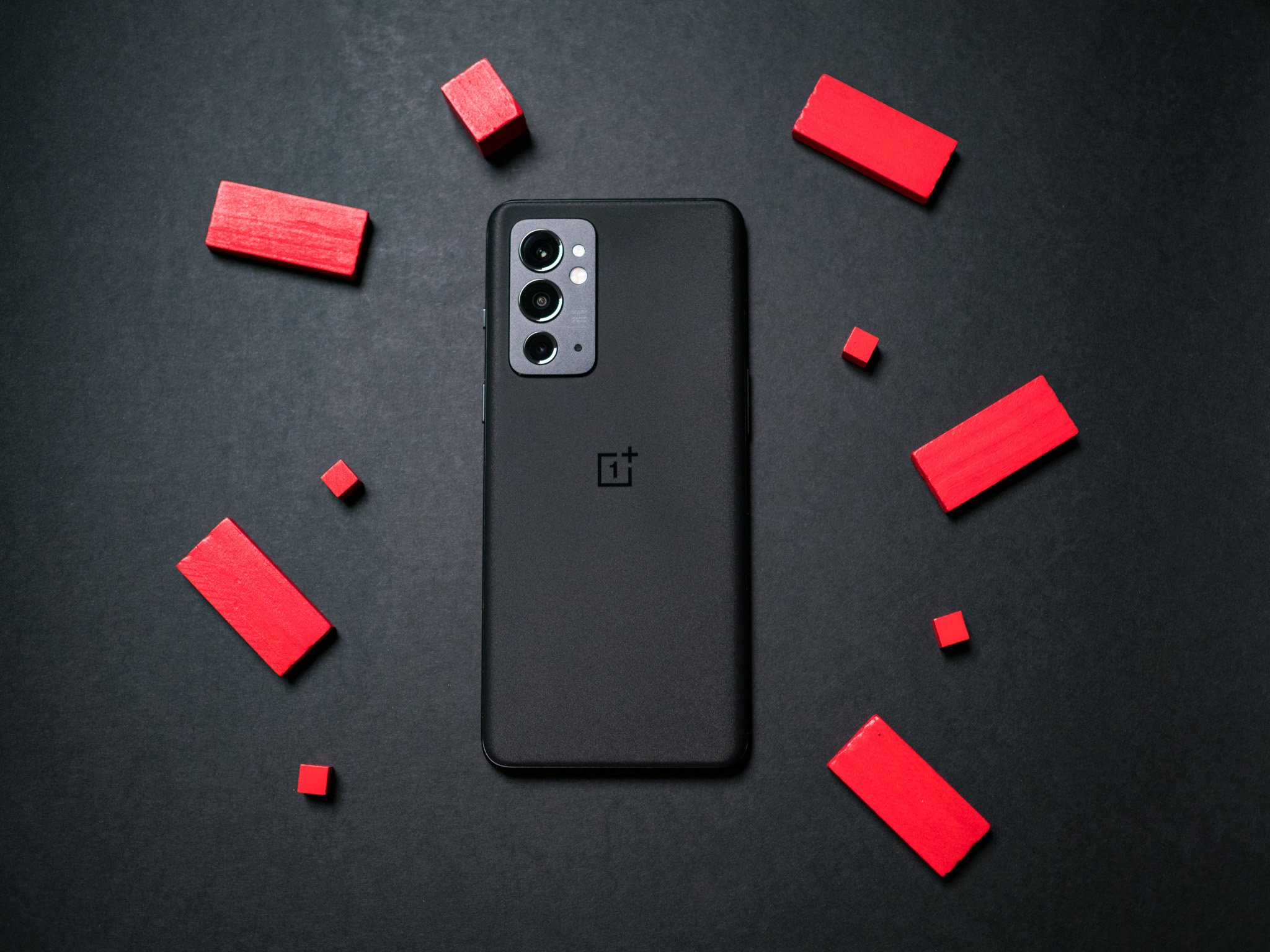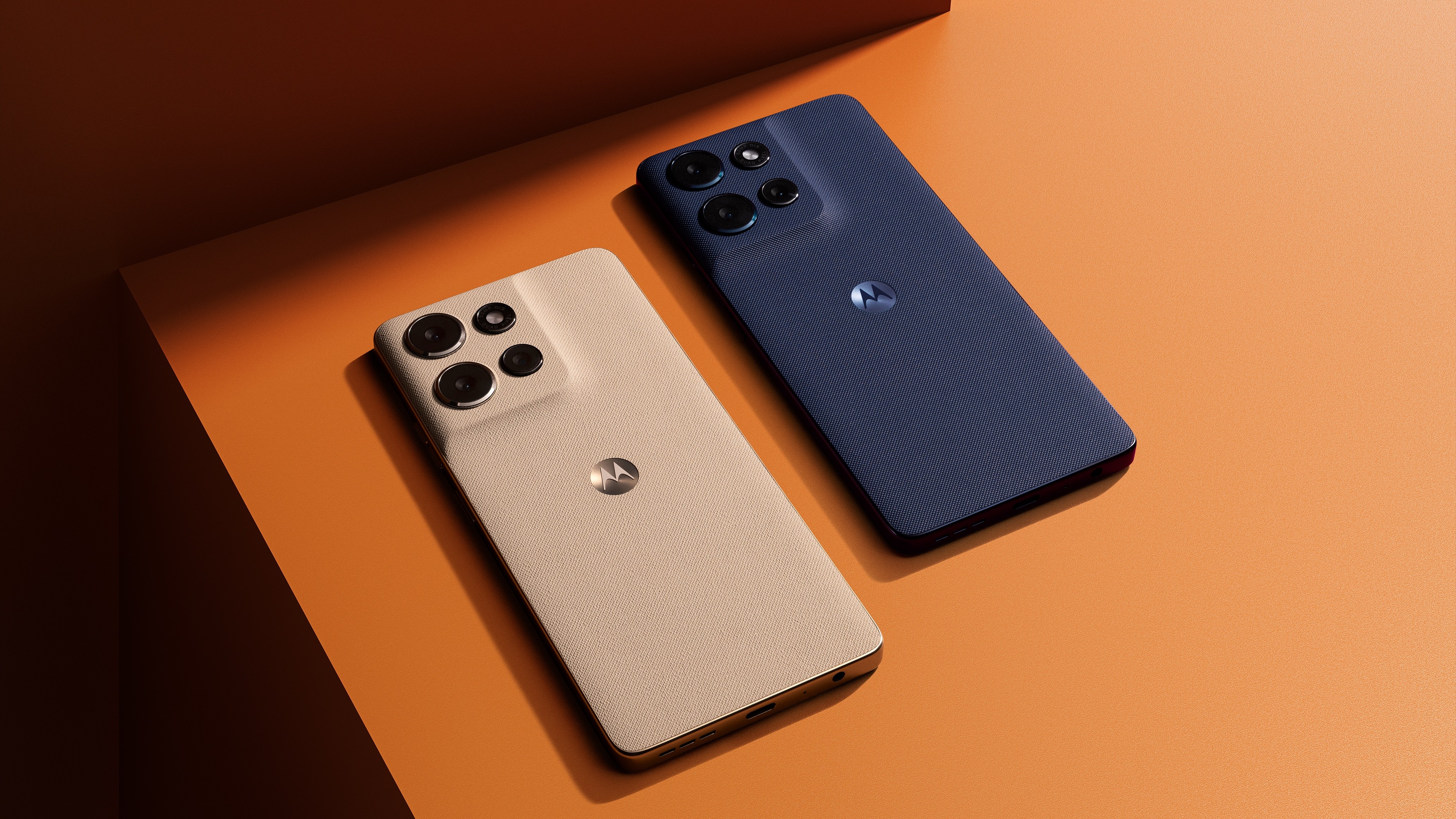Android Central Verdict
Bottom line: The OnePlus 9RT isn't a bad phone by any stretch of the imagination, but it costs nearly the same as the OnePlus 9, and you don't get the same caliber of features. The hardware is identical — there's a 120Hz AMOLED screen, Snapdragon 888 chipset, large battery with 65W charging — but the cameras aren't quite as good, and it doesn't come with Android 12 out of the box.
Pros
- +
High-end internal hardware
- +
Decent cameras with OIS
- +
Familiar design
- +
Large 120Hz AMOLED screen
- +
All-day battery with 65W fast charging
- +
Will get three platform updates
Cons
- -
Not very different to the OnePlus 9 and 9R
- -
Android 11 out of the box
- -
Cameras not as good as OnePlus 9
- -
No wireless charging
Why you can trust Android Central
OnePlus used to have a clear agenda: deliver the best value flagships and take a cut out of Samsung's high-end market share. That led to some of the best Android phones over the years, but the narrative has changed over the last two years as the Chinese manufacturer ventured into the budget category with the Nord series.
Back then, it felt like OnePlus phones had a definite purpose. Now, I'm not so sure. This is exemplified by the company's latest launch, the OnePlus 9RT. The phone is launching 15 months after the introduction of the OnePlus 8T (OnePlus says it ran into unavoidable delays), and it has the essentials you'd want in this category: Snapdragon 888, 120Hz AMOLED panel, 50MP camera, and a 4500mAh battery with 65W wired charging.
But I can't help but feel that the 9RT is irrelevant; it doesn't offer anything meaningful that wasn't already available with the OnePlus 9 series. The standard OnePlus 9 essentially features the same internal hardware, but you get a better 48MP camera, and it has the added advantage of leveraging Hasselblad's color science.
And if it's value you're after, the OnePlus 9R has you covered. So where does the OnePlus 9RT fit into all this? Honestly, it's hard to tell. While earlier phones in the T refresh didn't vary too much on the hardware front either, they managed to stand out in at least one meaningful way: the OnePlus 8T was the first phone with Android 11 out of the box.
The OnePlus 9RT is missing that marquee feature. This is basically just OnePlus rummaging in the parts bin and coming up with a phone that it can put up on the proverbial shelf for a few months before the OnePlus 10 rolls out.
On that note, I asked OnePlus why it was launching the 9RT when the OnePlus 10 Pro is already official. OnePlus says it is positioning the 9RT as a gaming-focused phone, and that it will be the only option in this category in H1 2022. Basically, the standard OnePlus 10 isn't launching anytime soon, but the OnePlus 9 and 9R will continue to be on sale in the coming months, and that is bound to have a tangible effect on the 9RT's initial momentum.
About this review
Get the latest news from Android Central, your trusted companion in the world of Android
I'm writing this review after using the OnePlus 9RT for three days in Hyderabad, India. The phone came with OxygenOS 11.3 based on Android 11 out of the box, and did not receive any updates. OnePlus India furnished the unit to Android Central for review.
OnePlus 9RT: Price and global availability

The OnePlus 9RT debuted October 19 in China, and it made its way to India on January 14. The phone isn't going to be available in other markets; OnePlus is only selling the device in these two countries.
In India, the OnePlus 9RT is available in two versions: the 8GB/128GB model costs ₹42,999 ($582), and the 12GB/256GB edition sells for ₹46,999 ($636). The device is slotting in between the OnePlus 9 and 9R, with the former selling for ₹44,999 ($608) and the latter for ₹36,999 ($500) for the 8GB/128GB model.
OnePlus 9RT: Design and display

The OnePlus 9RT feels like an amalgamation of the OnePlus 9 Pro and 9R. The phone is available in two options — Nano Silver and Hacker Black — and the former is nearly identical to the Morning Mist OnePlus 9 Pro. This variant has a glossy finish and a "mesmerizing reflective diffusion" that OnePlus likens to "uninterrupted speed and kinetic energy in motion."
The OnePlus 9RT has a matte texture that's similar to the Silk White OnePlus 6.
As for what the texture itself, OnePlus says it signifies "positivity and acceleration to a bright, intelligent future using technology the catalyst." Powerful stuff indeed. I'm using the Hacker Black verison of the 9RT, and this model has a matte texture with a polished finish that's akin to the Silk White OnePlus 6. OnePlus says the finish is "not only hauntingly beautiful, but also satin-like and comforting to hold."
The 9RT feels good in-hand, and I'm partial to the polished matte finish over the glossy texture on the silver version. The phone shares a similar aesthetic as other models in the OnePlus 9 series, and that's immediately evident with the way the curves at the back flow toward the mid-frame. It has excellent weight distribution, and with dimensions of 162.2 x 74.6 x 8.2mm, it is manageable for one-handed use. The back is made out of glass on both variants, and it includes a layer of Gorilla Glass 5.
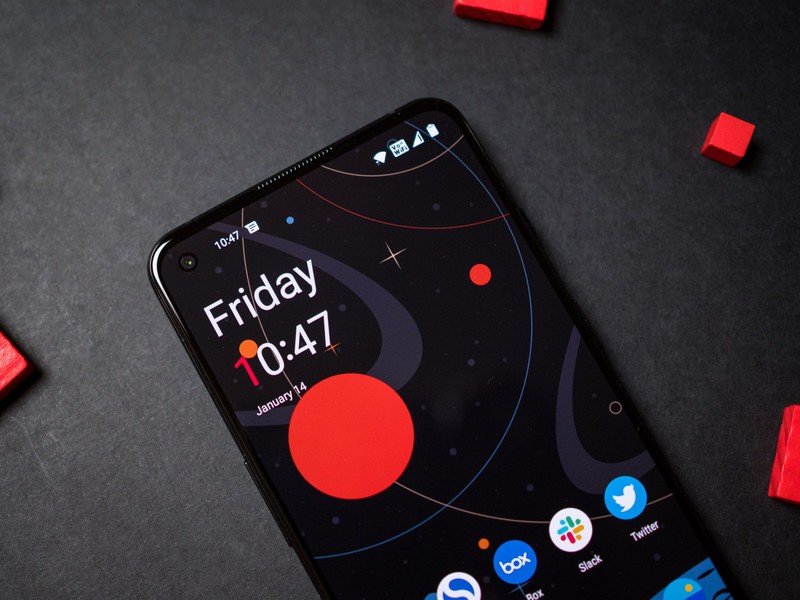

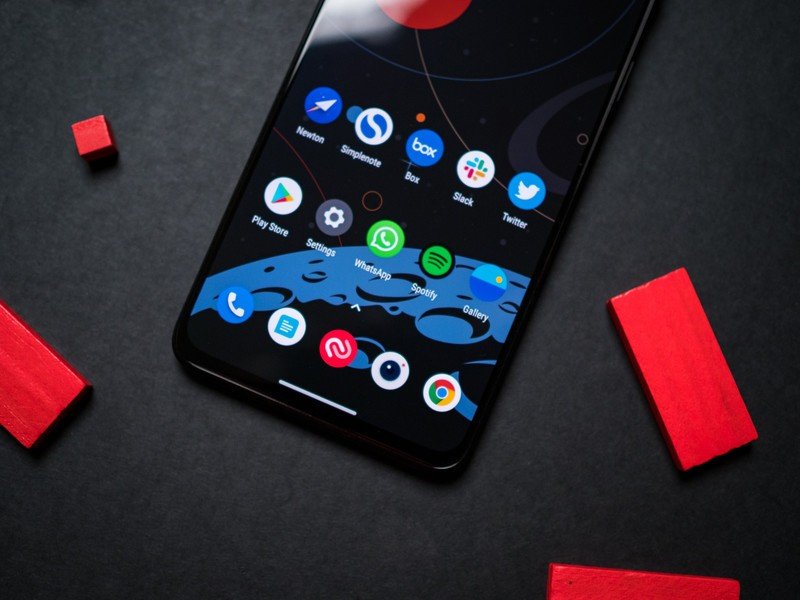
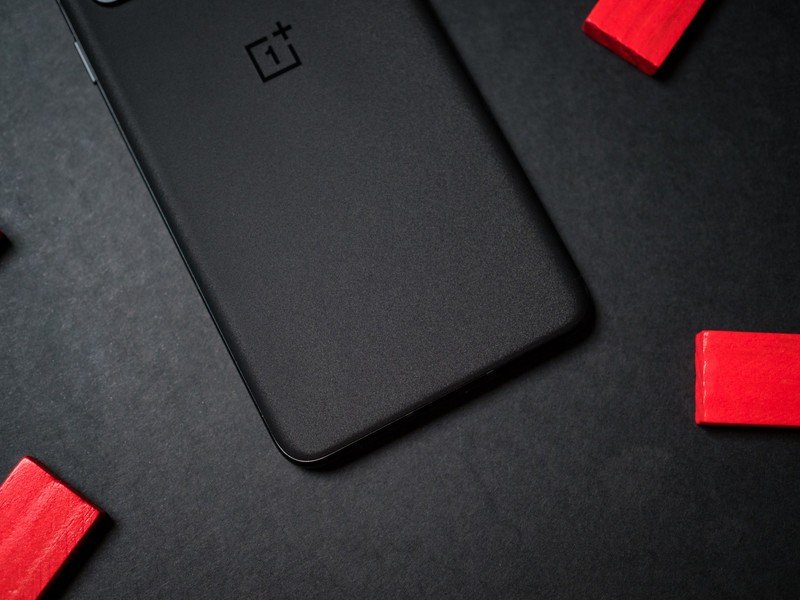
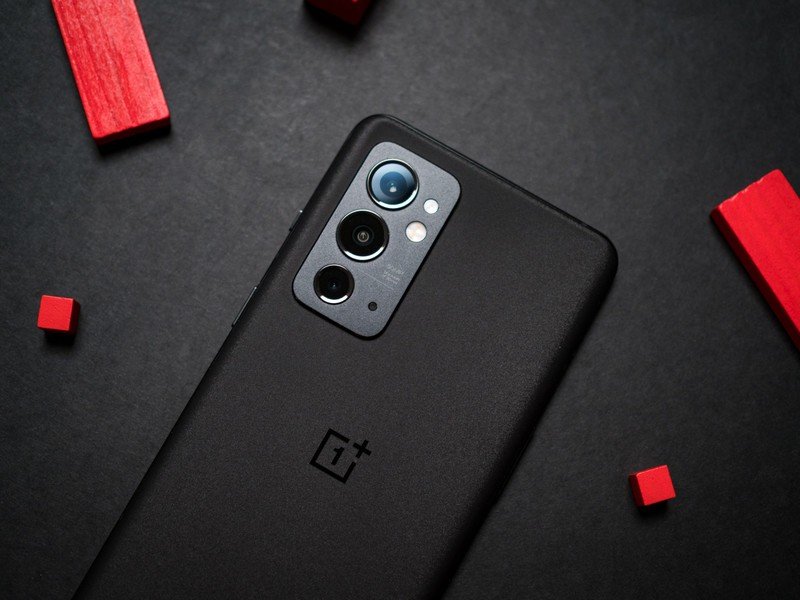
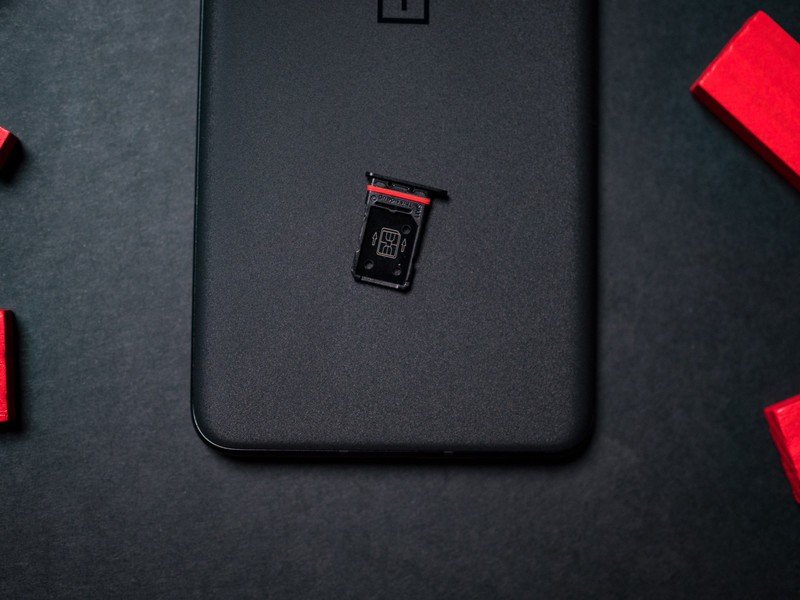



This is a bigger phone that the rest of the OnePlus 9 series, but the curves at the back and rounded edges make it easier to hold and use. The camera housing dominates the design at the back, with large rings around the main and wide-angle lenses. There's no Hasselblad tuning here; that is limited to the flagships, so you won't find the logo at the back.
There's no change to the buttons and ports: the volume rocker is to the left, the power button is on the right, just below the alert slider. The SIM card tray is at the bottom to the left of the charging port, and you can slot two SIM cards in here.
Overall, the OnePlus 9RT has a familiar design with a few accouterments from the 9 Pro to give it added flair. I like the color option and the feel of the matte texture, and although the device is a little too big for my needs, it isn't that unwieldy to use.

As for the screen, the only difference between the OnePlus 9RT and the 9R is that the panel size is larger here. You get a 6.62-inch screen with the same FHD+ resolution, and the added screen real estate comes in handy when playing games and streaming videos.
The screen is larger than what you get on the OnePlus 9 and 9R, and it is just as good.
The panel quality itself is on par with other devices in this category. You get vibrant colors, excellent viewing angles, and I didn't have any issues with brightness levels — it kicked up the brightness when outdoors, and turned it down at night automatically. The screen has a layer of Gorilla Glass 5, so you get some level of protection against tumbles.
There is stereo sound here, but it isn't anywhere as good as what you get on Xiaomi phones, including the mid-range Xiaomi 11i. The issue is that the 9RT doesn't use identical channels, so while you get some stereo separation, it isn't as enjoyable. That said, it is better than a single speaker and you will see some difference when streaming videos.
Finally, the 9RT has 300Hz touch polling, but it is boosted to 600Hz in select games. The idea is to decrease the latency of the screen by as low as 28ms (from 36ms), but OnePlus didn't clarify what games (if any) will utilize this feature. On the whole though, the OnePlus 9RT delivers the goods when it comes to the screen, and it is enjoyable to use the massive panel.
OnePlus 9RT: Performance and battery

There isn't much to talk about on the hardware side of things. OnePlus isn't in the habit of making too many hardware changes with its T refresh designs, and that's the case with the 9RT as well.
| Specs | OnePlus 9RT |
|---|---|
| Software | OxygenOS 11 based on Android 11 |
| Display | 6.62-inch (2400x1080) 120Hz AMOLED |
| Chipset | 2.84GHz Snapdragon 888 |
| RAM | 8GB/12GB |
| Storage | 128GB/256GB |
| Rear Camera 1 | 50MP ƒ/1.8 (primary) |
| Rear Camera 2 | 16MP ƒ/2.2 (wide-angle) |
| Rear Camera 3 | 2MP ƒ/2.4 (macro) |
| Front Camera | 16MP ƒ/2.4 |
| Connectivity | Wi-Fi 6, BT5.2, NFC |
| Battery | 4500mAh | 65W |
| Security | In-screen fingerprint |
| Dimensions | 162.2 x 74.6 x 8.2mm |
| Weight | 198g |
The phone is powered by the 5nm Snapdragon 888 that goes up to 2.84GHz, and that means it has a little more headroom than the standard 9R when it comes to gaming and other intensive tasks. That said, I don't have any issues with the 9R yet, so the differences may not be as evident until a few years down the line.
OnePlus is sticking to its standard 8GB/128GB option as the base model of the 9RT, and you can choose the 12GB/256GB variant if you want more storage. The hardware itself is nearly identical to what you get on the OnePlus 9, so if you're wondering why this phone isn't called the OnePlus 9T, it's because of availability: the 9RT is essentially a regional launch — limited to China and India — so it gets the R designation.
The one new hardware feature that OnePlus added to the 9RT is a new Wi-Fi antennae that is designed to deliver a more consistent signal — once again playing into the narrative that this phone is aimed at gamers. In the little time I used the 9RT, I didn't see any issues with Wi-Fi 6 connectivity, and the signal strength wasn't noticeably different to what I got on the OnePlus 9.
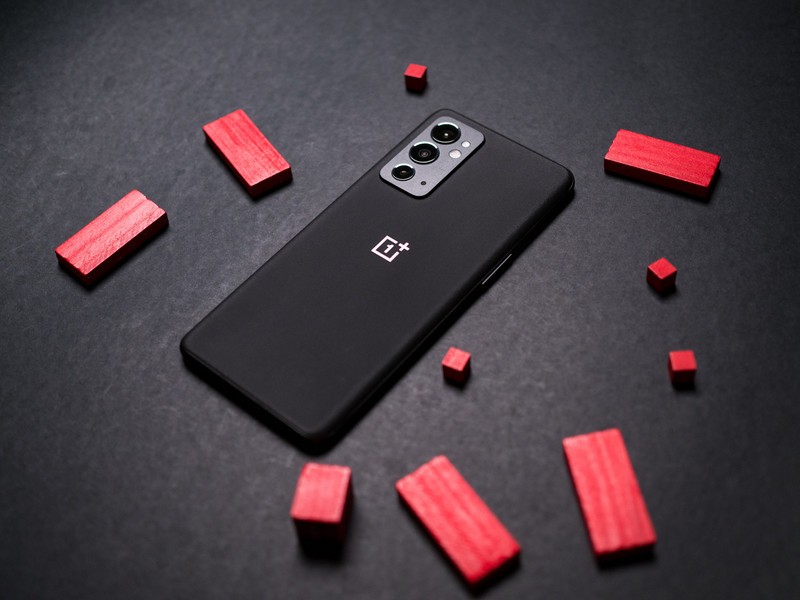
OnePlus messed up with 5G bands on the Indian variants of the OnePlus 9 and 9 Pro last year, offering just two (41, 78), and it is making amends with the 9RT. The phone gets a wider selection of 5G bands, with eight in total: 1, 3, 5, 8, 28A, 40, 41, and 78. This isn't relevant at the moment as there are no 5G networks in the country, but it is bound to be useful once Jio and Airtel start rolling out 5G service.
You get high-end internals and all-day battery life, but the 9RT misses out on the extras.
You get NFC, Bluetooth 5.2, and AptX HD along with the LDAC audio codecs, but the device misses out on the LHDC codec. The vibration motor is very good and delivers great feedback, and the phone has the distinction of offering the largest liquid cooling system of any OnePlus phone yet.
As for battery life, there's nothing to differentiate the 9RT with the rest of the devices in the OnePlus 9 series. The phone has a 4500mAh battery with 65W fast charging, and the bundled charger goes up to 33W USB PD, making it a decent choice for charging other devices.
This particular battery and charging tech is a known quantity by now, and in the three days I used the 9RT, I didn't have any issues on this front. It takes just over 16 minutes to charge the battery up to 65%, and a full charge takes 30 minutes.
Now for what's missing: the OnePlus 9RT doesn't include wireless charging, with that feature limited to the OnePlus 9 Pro in India. It also doesn't have any IP rating, and that is a bigger omission when you consider mid-range devices like the Galaxy A52 now offer the feature as standard.
OnePlus 9RT: Cameras
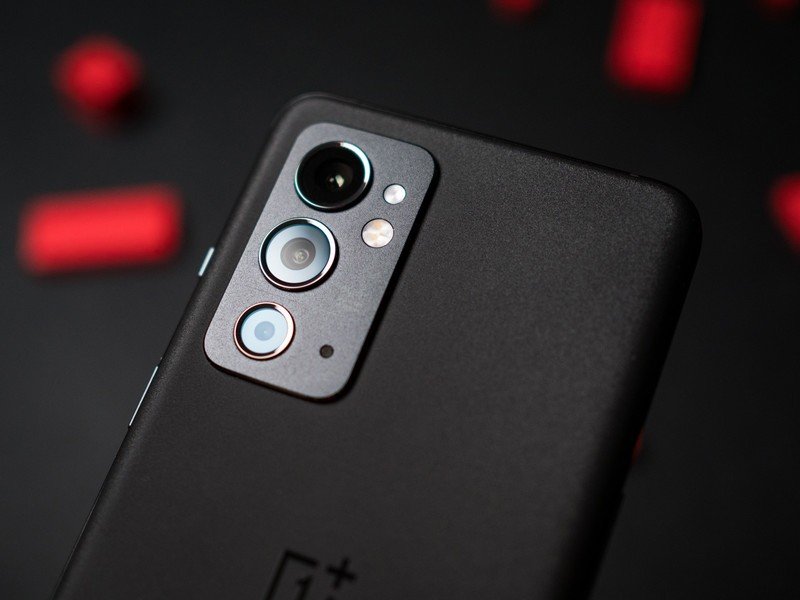
The OnePlus 9RT includes three cameras at the back: a 50MP f/1.8 Sony IMX766 module that's taken from the wide-angle lens on the OnePlus 9, 16MP wide-angle lens (Sony IMX481), and a 2MP macro lens. You get a 16MP camera at the front that uses the Sony IMX471 — same as most OnePlus devices over the last two years.
With the switch to OxygenOS 11.3, OnePlus ditched its own camera app and started using OPPO's solution. This turned out to be a good move because OnePlus couldn't quite dial in the camera algorithms on its own, with its earlier phones suffering as a result.
As for the interface, it's largely unchanged; you get the shooting modes in a grid at the bottom, toggles at the top for AI, flash, beauty filters, and settings. You can easily switch between the serious lenses, and the phone goes up to 50x zoom digitally. For video, there's 4K at up to 60fps, and the 9RT does a decent enough job in this regard.


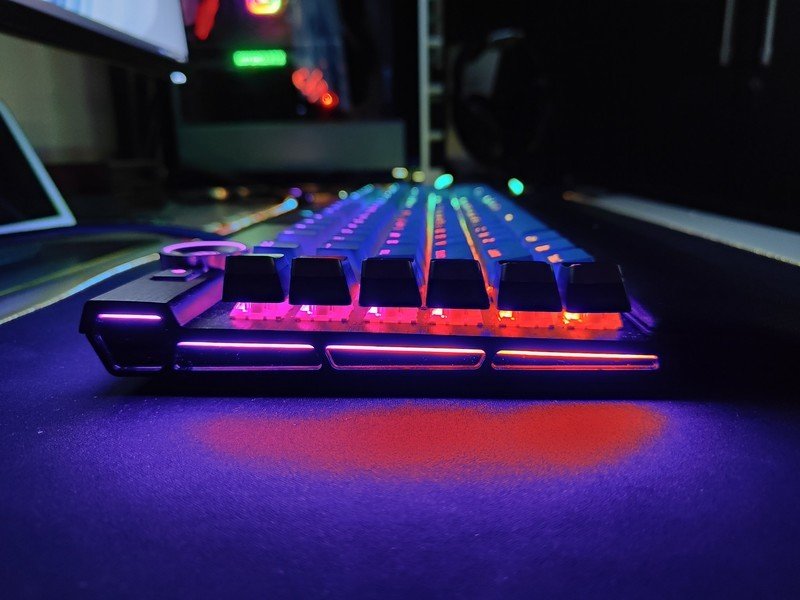

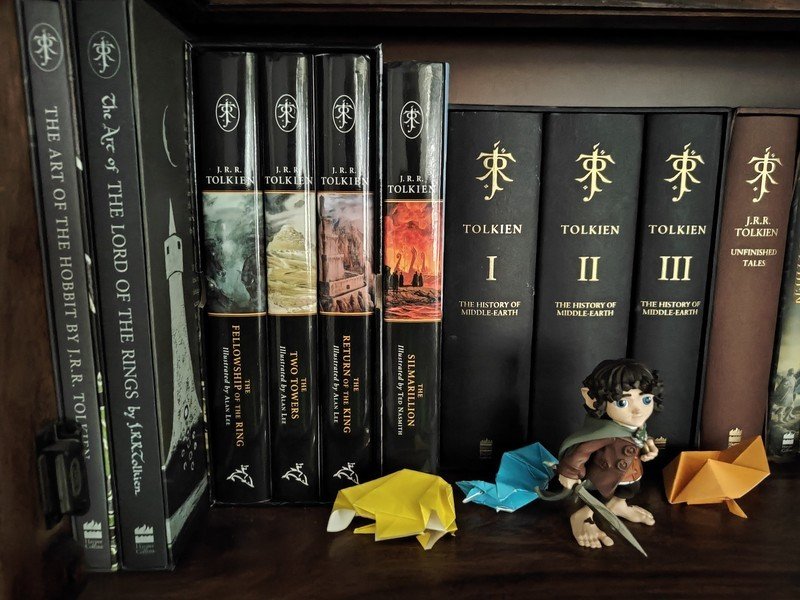



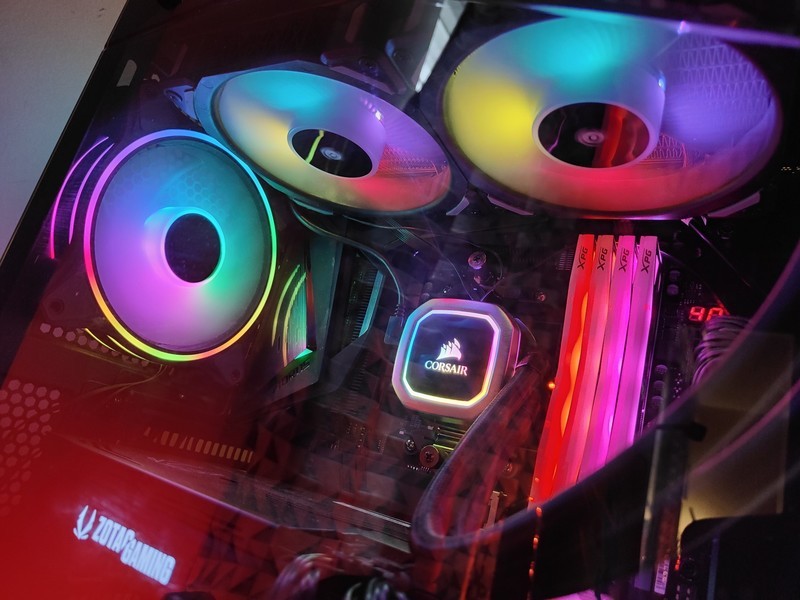
The 50MP camera takes outstanding photos in daylight scenarios, delivering great dynamic range and saturated colors. It's evident that OnePlus is using OPPO's tuning algorithms here, and that gives the photos a vibrant characteristic that was sorely missing in the past.
The OnePlus 9RT also holds its own in low-light scenarios, and while there is visible noise at times, you get great colors and there's no loss of detail. The dedicated night mode does a much better job eking out detail at night. The phone isn't quite as good as the OnePlus 9, but it is a good showing nevertheless.
Now, OnePlus uses Hasselblad's color science on the OnePlus 9 and 9 Pro, and you don't get the same here. Although the Hasselblad tuning doesn't necessarily lead to more accurate colors, it has a distinct signature to it that I like quite a lot. That said, the OnePlus 9RT holds its own for photos in any lighting condition, and that's what you want from a device in this category.
OnePlus 9RT: Software

OnePlus's software situation can be easily summed up as a comedy of errors. We got a good look at the first ColorOS integration in OxygenOS 11.3 on the OnePlus Nord 2 last year, and that was essentially a codebase change that didn't have many user-facing changes.
OnePlus couldn't get OxygenOS 12 to work on the 9RT, so it is running Android 11 — same as the 2020 8T.
The Android 12-based OxygenOS 12 was meant to deliver the full ColorOS integration, but OnePlus ran into so many issues in doing so that it is limited to the OnePlus 9 and 9 Pro. And while those devices were meant to get the stable OxygenOS 12 update, that hasn't materialized. I don't see it on my units, and the build is still rolling out to select users as OnePlus squashes what feels like a never-ending list of bugs.
As a result, the OnePlus 9RT runs OxygenOS 11.3 based on Android 11 out of the box. This isn't obviously an ideal situation because the phone is running the same version of Android as the OnePlus 8T that launched 15 months ago. Looking at the materials OnePlus shared with reviewers, it's clear that the phone was meant to launch with OxygenOS 12 sometime at the end of 2021, so things have definitely not gone to plan with the 9RT.
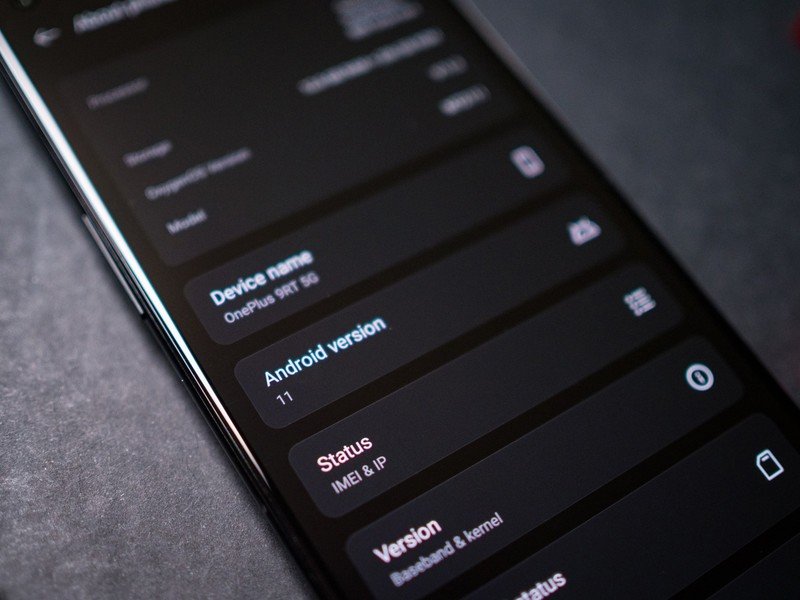
OnePlus had this to say when asked about when the OxygenOS 12 update will be available to the device:
OxygenOS 12 is under development, and we will consider pushing it out to users once we have a version worthy of its naming.
Considering that OxygenOS 12 is basically just ColorOS 12 with a few legacy OnePlus extras thrown in, I don't quite understand where OnePlus is going with the "version worthy of its naming" part, but the reality is that the 9RT won't get the OxygenOS 12 update for a while.
Initially, OnePlus suggested the 9RT would get just two Android version updates — taking it to Android 13 — but the manufacturer has clarified and will now deliver three platform updates to the device, putting it on par with the OnePlus 9 and 9 Pro. This makes up for the lack of Android 12 to a little extent, but it's still a letdown that the device doesn't have the latest version of Android out of the box.
The software itself is clean and well-optimized for the hardware, and there is a lot of customizability. You won't find much in the way of bloatware, the design is easy on the eyes, and while it's lacking coherence, it is fun to use. But the uncertainty around OxygenOS 12 takes the shine off the software, and even with three platform updates it is a poor choice next to the OnePlus 9.
OnePlus 9RT: The competition

The obvious choice here is the OnePlus 9. The phone debuted in India for ₹49,999 ($675) but it is now available for ₹44,999 ($608). You get a 120Hz AMOLED panel with Snapdragon 888, 8GB of RAM and 128GB of storage, and better cameras. It has a 4500mAh battery as well along with 65W fast charging, and will get three platform updates. At just ₹2,000 more ($27) than the 9RT, it is an easy recommendation.
The OnePlus 9R is a good value-focused option to consider; it also has a 120Hz AMOLED panel, and the Snapdragon 870 holds its own for gaming. The 48MP camera isn't quite as good as the 9RT, but you get the same 4500mAh battery and 65W fast charging. At ₹36,999 ($500), you are getting a lot for your money.
If you need a phone for gaming, the iQOO 7 Legend continues to be a stellar choice. The phone has the same 6.62-inch 120Hz AMOLED panel as the 9RT, and you get the Snapdragon 888, 8GB of RAM, and 128GB of storage. The 48MP camera at the back has OIS and takes good photos, the 4000mAh battery is good for all-day use and comes with 66W charging, and I like the design quite a bit. The device runs Vivo's Funtouch OS 11, and while it isn't as intuitive to use as OxygenOS, it gets a lot right. At ₹39,990 ($540), it is a brilliant overall value.
OnePlus 9RT: Should you buy it?

You should buy this if ...
You need a gaming phone
The OnePlus 9RT is being positioned as a gaming phone, and it's not hard to see why: the hardware is among the best you'll find in this category, the large 6.62-inch 120Hz AMOLED screen is fun to use, and the Snapdragon 888 deliver standout performance.
You want bloat-free software
I'm annoyed at the fact that the 9RT doesn't come with Android 12, but for what it's worth, the software itself doesn't have any bloatware and is generally good to use. The ColorOS integration doesn't translate to any user-facing changes (at least on this build), and you get a UI that's fluid in day-to-day use.
You're looking for reliable cameras
The OnePlus 9RT doesn't quite take the same caliber of photos as the OnePlus 9, but it fares better than the 9R. You get decent photos in almost any scenario, and it holds up well for video recording as well.
You should not buy this if ...
You want the latest software
The OnePlus 9RT runs OxygenOS 11.3 based on Android 11 out of the box, so you miss out on the latest version of Android. OnePlus ran into significant issues with the Android 12-based OxygenOS 12 build, and at this moment there's no telling when the device will get the update.

At the end of the day, it comes down to this: the OnePlus 9RT costs ₹2,000 ($27) less than the OnePlus 9. It has the same internal hardware, but the main camera isn't as good, the wide-angle lens is nowhere on the same level as the OnePlus 9, and you miss out on the Hasselblad tweaks.
OnePlus has now confirmed that it will deliver three platform updates to the 9RT, going back on its initial stance of two updates like the regular 9R. So this means the device will be updated to Android 14, just like the OnePlus 9 and 9 Pro.
3.5 out of 5
In my opinion, the OnePlus 9 is a no-brainer just for the cameras alone, and when you factor in the design and the fact that it will get updates faster, it becomes the obvious choice in this category. If you want to maximize value, the OnePlus 9R will continue to be on sale following the introduction of the 9RT, and it is the ideal choice at ₹36,999.

Harish Jonnalagadda is Android Central's Senior Editor overseeing mobile coverage. In his current role, he leads the site's coverage of Chinese phone brands, networking products, and AV gear. He has been testing phones for over a decade, and has extensive experience in mobile hardware and the global semiconductor industry. Contact him on Twitter at @chunkynerd.
